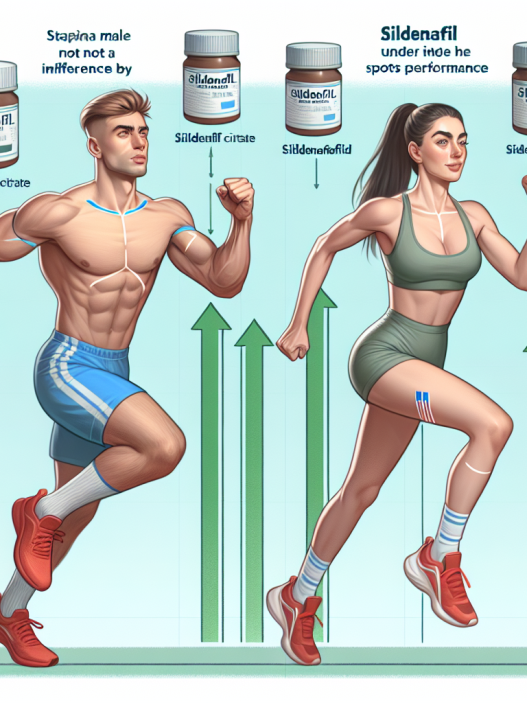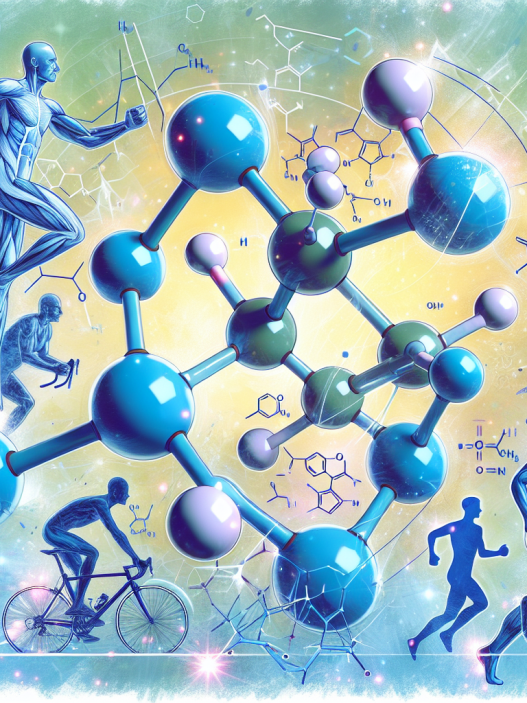-
Table of Contents
Exploring Modafinil (Provigil) and Athletic Performance Pharmacologically
In the world of sports, athletes are constantly seeking ways to improve their performance and gain a competitive edge. While training, nutrition, and genetics play a significant role, the use of pharmacological substances has also become a common practice. One such substance that has gained attention in recent years is modafinil, also known by its brand name Provigil. This article will explore the pharmacological effects of modafinil on athletic performance and its potential benefits and risks.
The Pharmacology of Modafinil
Modafinil is a wakefulness-promoting agent that was initially developed to treat sleep disorders such as narcolepsy, shift work sleep disorder, and obstructive sleep apnea. It works by increasing the levels of dopamine, norepinephrine, and histamine in the brain, leading to increased alertness and wakefulness (Minzenberg & Carter, 2008). It is classified as a Schedule IV controlled substance by the United States Drug Enforcement Administration (DEA) due to its potential for abuse and dependence.
Modafinil is available in tablet form and is typically taken orally. It is rapidly absorbed by the body, with peak plasma concentrations reached within 2-4 hours after ingestion (Minzenberg & Carter, 2008). The half-life of modafinil is approximately 12-15 hours, meaning it stays in the body for a relatively long time compared to other stimulants (Minzenberg & Carter, 2008). This extended duration of action is one of the reasons why modafinil has gained popularity among athletes.
The Effects of Modafinil on Athletic Performance
The use of modafinil in sports is primarily driven by its ability to enhance cognitive function and reduce fatigue. Studies have shown that modafinil can improve reaction time, decision-making, and working memory (Minzenberg & Carter, 2008). These effects can be particularly beneficial for athletes who need to make quick and accurate decisions during competition.
Furthermore, modafinil has been found to reduce fatigue and increase alertness, allowing athletes to train for longer periods without experiencing mental or physical exhaustion (Minzenberg & Carter, 2008). This can be especially advantageous for endurance athletes who need to maintain a high level of performance for extended periods.
Another potential benefit of modafinil for athletes is its ability to improve mood and motivation. Studies have shown that it can increase levels of dopamine, a neurotransmitter associated with pleasure and motivation (Minzenberg & Carter, 2008). This can be particularly useful for athletes who may experience mental fatigue or lack of motivation during intense training or competition.
The Risks and Side Effects of Modafinil Use
While modafinil may offer potential benefits for athletic performance, it is essential to consider the potential risks and side effects associated with its use. One of the main concerns is the potential for abuse and dependence. As a controlled substance, modafinil has the potential to be misused by athletes seeking to gain an unfair advantage. Additionally, long-term use of modafinil may lead to dependence and withdrawal symptoms when use is discontinued (Minzenberg & Carter, 2008).
Other potential side effects of modafinil use include headaches, nausea, anxiety, and insomnia (Minzenberg & Carter, 2008). These side effects may impact an athlete’s performance and overall well-being, making it crucial to carefully consider the risks before using modafinil.
Real-World Examples
The use of modafinil in sports has gained attention in recent years, with several high-profile cases of athletes testing positive for the substance. In 2014, American sprinter Kelli White was stripped of her world championship titles after testing positive for modafinil (BBC, 2004). In 2016, Russian tennis player Maria Sharapova received a two-year ban from the sport after testing positive for the substance (BBC, 2016). These cases highlight the potential consequences of using modafinil in sports and the importance of understanding its pharmacological effects.
Expert Opinion
While modafinil may offer potential benefits for athletic performance, it is essential to consider the potential risks and side effects associated with its use. As a researcher in the field of sports pharmacology, I believe that more studies are needed to fully understand the effects of modafinil on athletic performance. Additionally, strict regulations and monitoring should be in place to prevent its misuse in sports. Athletes should also be educated on the potential risks and side effects of modafinil use before considering its use for performance enhancement.
References
BBC. (2004). White stripped of world titles. Retrieved from https://www.bbc.com/sport/athletics/35106768
BBC. (2016). Maria Sharapova: Russian given two-year ban for failed drugs test. Retrieved from https://www.bbc.com/sport/tennis/36466069
Minzenberg, M. J., & Carter, C. S. (2008). Modafinil: a review of neurochemical actions and effects on cognition. Neuropsychopharmacology, 33(7), 1477-1502.

















